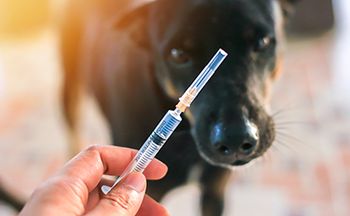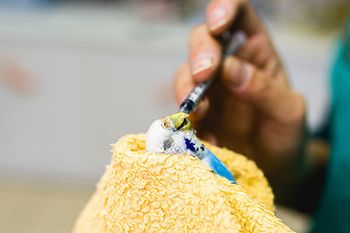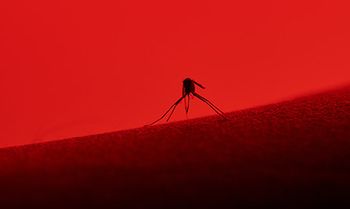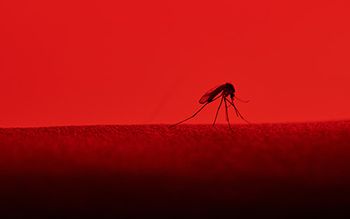
When your veterinary patient requires crate rest to heal from surgery or injury, make sure to educate owners about the challengesand be ready with strategies to make the process manageable for both pet and people.
Dr. Natalie Stilwell provides freelance medical writing and aquatic veterinary consulting services through her business, Seastar Communications and Consulting. In addition to her DVM obtained from Auburn University, she holds a MS in fisheries and aquatic sciences and a PhD in veterinary medical sciences from the University of Florida.

When your veterinary patient requires crate rest to heal from surgery or injury, make sure to educate owners about the challengesand be ready with strategies to make the process manageable for both pet and people.

In a recent study, feline diabetic patients demonstrated similar changes in gut bacteria to those seen in human patients with type II diabetes mellitus.

Noninfectious neurologic diseases were once known as pug dog or Yorkie encephalitis. Heres the latest on diagnosis, treatment and prognosis for your veterinary patients with this challenging illness.

Using computer modeling software, veterinary researchers compared the relative effectiveness of various trap-neuter-return and permanent removal strategies over a simulated 10-year period. Heres what they found.

You dont need us to tell you about the importance of communication with veterinary clients. But a recent survey proves a gap in pet owners understanding of animal pain and surgery.

Although rare, several forms of adverse reactions have been documented after vaccination in dogs and cats. Heres what veterinary teams need to know today.

Owners of chronically and terminally ill pets have a high risk of caregiver burden, but newer tools are refining the ability of veterinary teams to detect this burden in their clients.

One recent study explores the effect of dysfunctional workplaces on veterinary team members, while another focused on the secondary stress involved in helping stressed pet owners, something called burden transfer."

According to emergency critical care specialist Dr. Justine Lee, this common condition offers both challenges and rewards for the veterinarian.

According to internal medicine specialist Dr. Daniel Langlois, long-term maintenance of hypoadrenocorticism can be a controversial topic.

Addressing critical issues first, such as hemorrhage, shock and electrolyte abnormalities, can greatly improve the likelihood of survival after transfer to emergency care.

Anorexia, traumatic injury and respiratory distress are among the most common critical issues seen in exotic pets. Veterinary technicians can help achieve a positive outcome for these patients through effective triage and diligent monitoring.

Having a solid understanding of the heartworm life cycle, and the damage this disease can do, is the first step in getting pet owners on the right track with treatment.

Heartworm disease is accompanied by few, if any, clinical signs, so proper diagnostic testing is a must. Here's the 411 for veterinary professionals on which tests to use (and why), including the best tests for cats.

Selling to an associate shapes the future of the veterinary profession. In this era of corporate buyouts and growing multipractice chains, dont give up on selling to a smart millennial quite yet.

You've got the fundamentals of heartworm disease down, with a good grasp of the diagnostics, but treatment can be tricky. Here are the tactics recommended by veterinary experts, plus less extensive and less expensive alternatives.

Heartworm disease is affecting more dogs and cats in more parts of the country than ever, in part due to the long-distance transport of shelter animals. Here's what you need to know to educate your veterinary clients.

Hungry for more information on food allergies, and the associated dermatologic conditions in dogs? Use these tips to help your veterinary team discern dietary sensitivities in your patients.

Drawing from their evaluation of current standards and practices in human and veterinary medicine, UK researchers make recommendations for infection prevention with antimicrobials in dogs and cats receiving chemotherapy.

Osteosarcoma is a highly aggressive and locally destructive cancer in veterinary patients. Heres the latest on diagnosis, treatment and prognosis for these common bone tumors in dogs and cats.

Noncompliance with recommended treatment is a common concern in veterinary medicine, but existing literature provides few clues to its causes.

Early detection and regular follow-up are important components for managing this slowly progressive condition in catsand helping cat owners understand the difference between feline cognitive dysfunction and ordinary aging.

Newer testing methods, administration routes and adjuvants show promise for mainstream use in veterinary patients.

Pain management is fundamental to feline health and welfare. Heres the latest on what veterinary tools work best to assess acute pain in cats.

Although many ingredients affect dogs and cats adversely, associated syndromes are often poorly understood and lack specific diagnostic tests.

A large international study on feline weight loss reveals factors that are significantly associated with the likelihood that cats will shed unwanted pounds.

Inappropriate administration of gastroprotectants in dogs and cats is common and can lead to severe adverse effects. Heres how to avoid putting your patients at risk.

A recent study at Washington State University examined a new route of administration for the popular anti-seizure drug.

An Australian study examined potential relationships between body condition score, survival time, and lifespan in cats, with somewhat surprising findings.

A recent study described the presenting signs, treatment, and outcome for 22 cases.

Published: January 27th 2018 | Updated:

Published: January 28th 2018 | Updated:

Published: February 6th 2018 | Updated:

Published: February 7th 2018 | Updated:

Published: February 17th 2018 | Updated:

Published: February 25th 2018 | Updated: